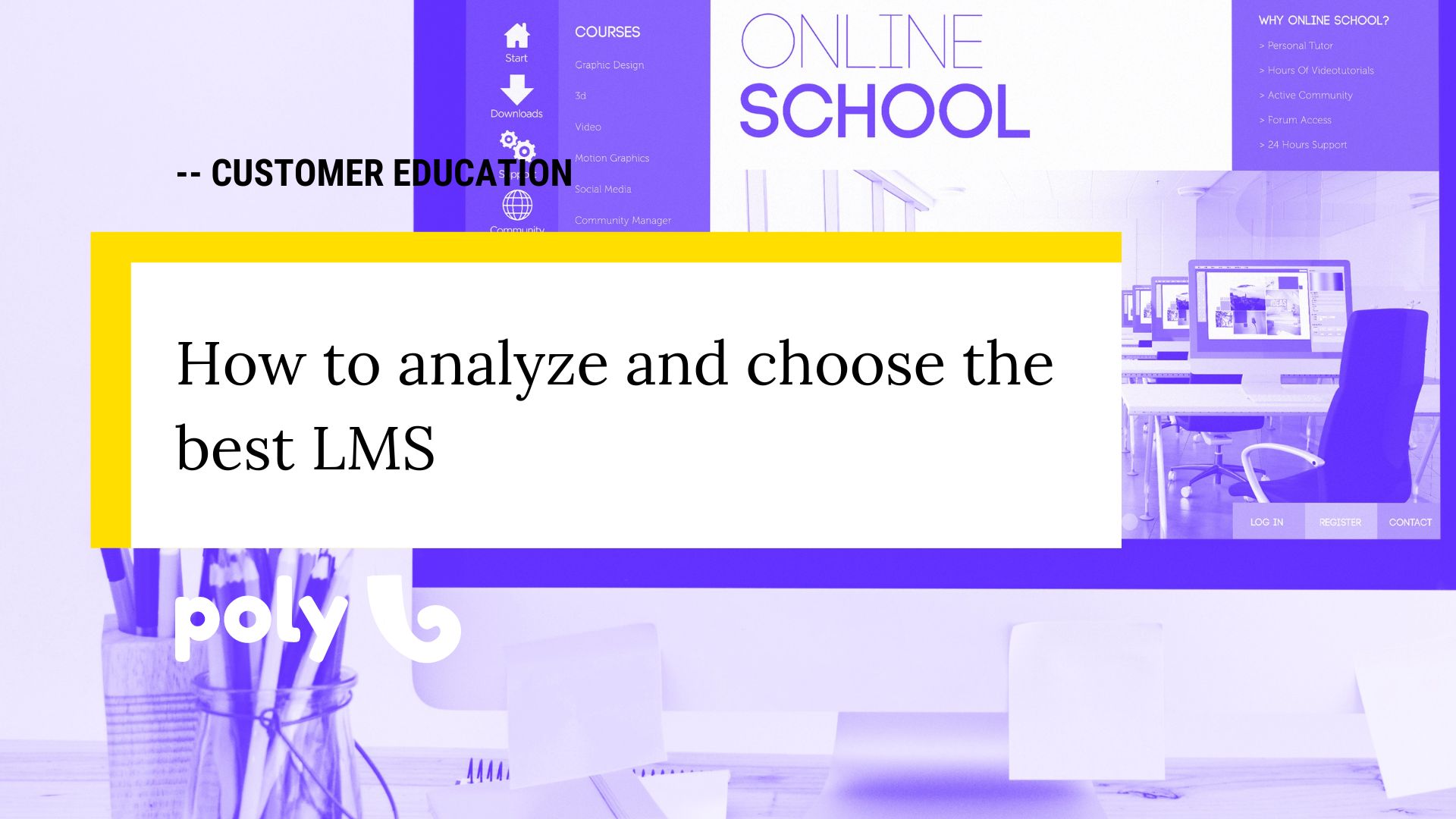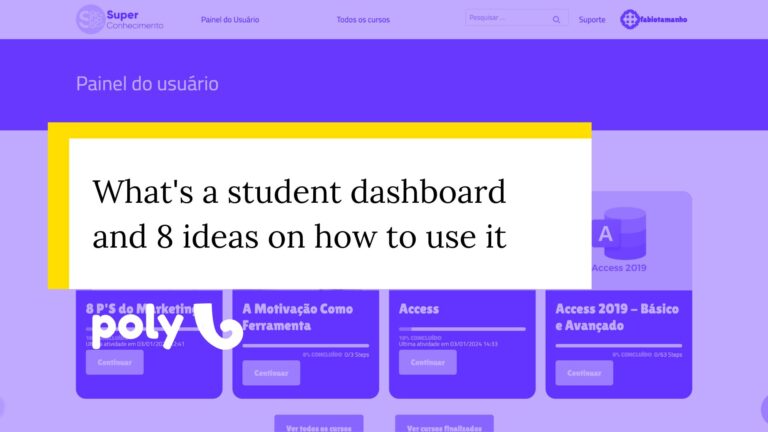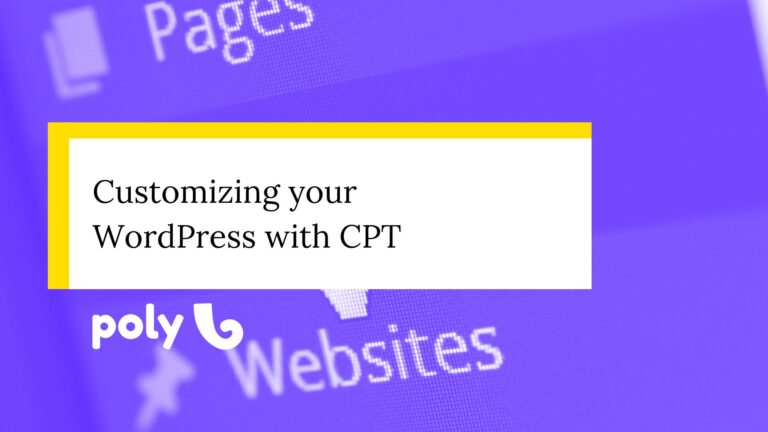How to analyze and choose the best LMS in the market
Online courses and Customer Education are closely related, I’ve talked about it extensively in other articles. But you can have the most amazing course, and if you don’t have the right platform, you won’t reach as many people as possible.
That’s where the doubt comes in, how do you choose the best platform for your course? You’ve probably thought of various ways to deliver your course, but when it comes to putting it into practice, you always have this question: How will I deliver it?
Considering this difficulty, I’ll delve into what LMS or learning management systems are today. I’ll also provide you with the key points to consider when choosing an LMS and the best ones available in the market today.
With this article, you’ll definitely have all the tools to have a platform as powerful as the course you’re offering.
What is LMS?
LMS stands for Learning Management System, which is software designed to track students’ learning progress and assist educators in creating and delivering their courses.
In another post, we’ve already covered How to Choose an LMS, but it wasn’t as specific. However, it’s still worth a read.
Chances are, you’ve already taken an online course and entered a platform that tracks your performance throughout the lessons. That platform is precisely the LMS. You may have noticed that courses with different purposes have different platform functionalities.
For example, if you’re taking an Excel course, there’s often an area within the platform that simulates a spreadsheet for you to practice what you’ve learned. On the other hand, if you’re taking a language course, you’ll probably have exercises focused on reinforcing the content, such as recording audio or formulating specific sentences.
Thus, each course has a different objective, and that’s why the chosen LMS has distinct characteristics. However, every LMS has an administration area and a student area.
Each of these interfaces is tailored to its users. In the administration area, educators organize how the course will be presented, while in the student area, students access the lessons, assignments, and course notifications.
What criteria should you look for in an LMS?
When searching for an LMS, remember your course’s objective. As we mentioned before, each LMS offers different functionalities, so think about how to make the most of those features to achieve your desired results. I have already written an article covering these criteria before.
In general, choosing the right platform depends not only on your objective but also on what you intend to invest in starting the promotion of your online course.
Therefore, consider mapping each LMS according to some parameters:
How are the lessons organized internally? Check if the required format is fixed or flexible. If you already have a course prepared but the format doesn’t fit the chosen LMS, switching LMS platforms is easier than redoing the entire course. So here you can take two approaches: either create the course first and then find an LMS that fits it or find an LMS you like and then create the course accordingly.
How do assessment and communication with students work? If your course relies heavily on constant interaction between the teacher and the student, it’s important that the platform provides that space. Once again, align your course expectations with what the system can offer.
Does the platform promote courses? How does the platform handle course promotion? Will it be advertised to students from other courses, or is marketing left to the course creators? How much extra investment will it take for your course to reach more people?
Consider the payment system: Reflect on whether the platform charges the educator or if that cost is already included in the platform’s payment structure. Also, consider the payment methods available to your students, as greater diversity means more possibilities for them.
Finally, the cost of using the platform: This question carries significant weight, but remember that price shouldn’t be analyzed in isolation. Assess the cost-benefit ratio of each platform and how it aligns with your ultimate goals, along with the other parameters mentioned here.
There are other important details to consider before committing to a specific platform, but the points outlined above are the main ones to pay attention to.
If you’re still uncertain about different LMS options despite these criteria, consider the following questions:
- Can I sell other products? Create course bundles and offer ebooks and consultations.
- Can I receive feedback on the course, activities, materials, and teaching methods? Does the platform provide feedback collection and control?
- Are there metrics to measure the course’s success? Can I track retention and dropout rates?
- Can I use online courses to promote my social media and website?
- What level of access do I have to student information? Can I contact them via email?
- How does the support system work? Will I receive assistance from the customer service team if there are any issues with creating the lessons? And what about my students? Will they have support?
- With these questions aligned with your objectives, you’ll definitely have a clearer idea of which platform will be best for your online course.
Best LMS for Customer Education in the market.
You’ve probably noticed in your research for an LMS that various options are available in the market. Here, I’ll share the best choices according to the criteria I established earlier. However, keep in mind that this varies based on each objective! With that in mind, let’s dive into the list:
TalentLMS
TalentLMS is known for its user-friendly interface and has over 70,000 teams worldwide. It was initially focused on corporate training and is cloud-based, allowing you to log in and upload your videos to offer your courses. It offers both free and paid versions (in dollars).
Companies widely use this LMS for employee training and onboarding. It’s a perfect solution if you’re looking for a platform that is easy to use and can adapt to your needs.
One advantage is the ability to access it on any device, even offline. While there are paid plans, users can use the free version indefinitely and only upgrade if they need more features.
360Learning
Another popular LMS platform is 360Learning. The idea behind this LMS is to deliver content collaboratively and interactively. The unique approach is that the content is not presented top-down but bottom-up, offering a whole new perspective on shared learning.
360Learning has been operating since 2013 and has impacted over 1,500 organizations. Like TalentLMS, the company focuses on producing intuitive and straightforward content, focusing on videos of less than 17 minutes. Due to this different content delivery approach within each company, according to 360Learning, over 90% of courses on the platform are completed. The pricing plans are flexible and depend on the company’s size.
Docebo
Docebo is an LMS platform that doesn’t offer a free version but allows for a free trial. Many companies, including AWS, Walmart, Coca-Cola, and Heineken, work with Docebo.
The differentiating factor of this LMS platform is its ease of use, configuration, and customization options. Docebo is cloud-based, has received awards, and is widely used for onboarding and Customer Education.
A unique feature of this LMS is that the company is continuously integrating new technologies, including artificial intelligence, to assist learners. With Docebo, your company can connect the LMS with other software stacks such as CRM, HRIS, and SSO.
Furthermore, Docebo also offers customers detailed reports on course data and outcomes. This is an excellent way to enhance marketing strategies and reconsider course development.
iSpring Learn
iSpring Learn is a cloud-based LMS focused on employee training. It offers both a free version and advanced features with a premium account.
It is known for being highly reliable, user-friendly, and fast. It can be used for various forms of training, and its features are highly flexible and intuitive, making it easy to create online courses.
In addition, educators also have the ability to create quizzes, games, and other interactive functions for students. They can also associate courses with webinars and other content delivery methods.
LearnDash.
Of course, we can’t miss mentioning our favourite LMS, LearnDash. This LMS was designed to meet all the needs of small and medium-sized companies.
Learndash is fast, user-friendly, and integrates with WordPress, the world’s largest website creation system.
Everything you create in it is yours forever. That’s right, unlike other LMS platforms where you lose everything when you stop paying, that will never happen with LearnDash.
And you know what’s even better? You’re not charged based on a seat basis but yearly, regardless of how many students you have. Of course. payment gateway fees still apply.
We at Poly Studio install and upload the initial materials and make small adjustments. Poly is an instructional design agency, not a technology platform company. Our role is to install the LMS using custom integrations with various systems so that you can use it.
Visit our website to learn about our unique features.
Final tip: Check out the demos and who uses the mentioned LMS platforms. These were five highly recommended LMS platforms for Customer Education in the market. The choice among them varies depending on your company’s specific objectives.
Now that you know about LMS platforms and the criteria to choose them, you have all the necessary tools to ensure your online course has the right platform and achieves the expected results!








